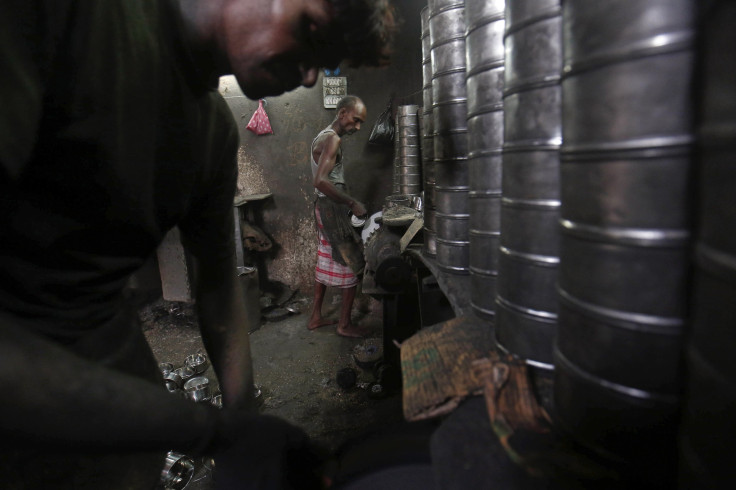Private Equity Exits In India Double, IT And IT-Enabled Services Sectors Lead Exits

India is poised for increased exits by private equity, or PE, investors in the near term as investments made between 2007 and 2008 near maturity amid poor macro-economic conditions, a volatile capital market, a significantly weakened rupee and slowing growth.
PE exits in the second quarter of 2013 doubled to reach $1.78 billion across 30 deals compared to $884 million from 29 deals in the previous quarter. On a year-on-year basis, the exits showed a more than five-fold increase in value and a 15 percent increase in volume, according to a PwC-MoneyTree India report.
Although the overall economic scenario may not be necessarily conducive for exits, “PE investors are likely to exit businesses that have performed well in the past six to seven years,” Sanjeev Krishnan, executive director and leader of PwC India's private equity division, told International Business Times.
The information technology, or IT, and IT-enabled services, or ITeS, sector topped the list of PE exits in the second quarter of 2013, in terms of both value and volume, with exits jumping to $539 million through 10 deals, compared to exits worth $25 million across four deals in the first quarter, and up from $43 million in the second quarter of 2012, according to the report, which derived data from Venture Intelligence.
“There are two main strategies that PE investors would utilize to exit: PE investors buying stocks from other PE investors such as in the case of Hexaware-Baring deal, or strategic investors looking for right opportunities, coupled with sporadic IPOs, because IPO market is pretty dead,” Krishnan said.
Baring Private Equity Asia has struck a deal to buy a 41.8 percent stake in Indian outsourcing service provider, Hexaware Technologies Limited (NSE:HEXAWARE), from founders and private equity investor, General Atlantic, for about $260 million, followed by a likely mandatory tender offer to buy an additional 26 percent for approximately $160 million, according to a Reuters report.
“Foreign investors who seek to expand their portfolio in the emerging markets, and certain PE funds that are contrarian, are expected to invest in India in the future,” he said. “The Indian government has been making the right kind of noise, and there have been policy reforms to open up the economy and to attract foreign investment.”
PE firms invested $2.33 billion across 82 deals in the second quarter of 2013 despite a 3.5 percent drop in the volume of deals. On an annual basis, there has been an increase of 18 percent in deal value despite a 29 percent drop in the number of deals. In the first quarter of 2013, India saw $929 million in PE investments across 66 deals.
The manufacturing industry, which attracted $796 million across six deals, attracted most of the quarter's PE funds by deal value, constituting 34 percent of total investments. The investment flow was driven mainly by two major deals, each worth more than $250 million. But, the figure represented a significant jump from $65 million in PE investments in the industry in the first quarter of 2013, and a mere $47 million in the second quarter of 2012.
“While deals in the manufacturing sector have picked up traction in the past few months, two large deals namely, KKR’s acquisition of a controlling stake in Alliance Tire from a Warburg Pincus affiliate and Baring Asia’s investment in Lafarge, have led the private equity activity within the sector. Stressed balance sheets have been a major contributing factor for driving manufacturing companies towards private equity funding,” Bimal Tanna, a partner in PwC's manufacturing division, said in the report.
The banking, financial services and insurance, or BFSI, sector, which registered the highest value of PE investments in the first quarter of 2013, saw a 47 percent drop in value and a 50 percent drop in volume in the second quarter, as India struggles with slowing growth, rising inflation and tight monetary policies put in place to defend the rapidly depreciating rupee. On a yearly basis, PE investments dropped by 60 percent by investment value and also in terms of the number of deals.
The IT and ITeS sector, traditionally considered lucrative for PE investments, drew the highest level of PE investments in the second quarter, in terms of volume, and was second only to the manufacturing sector, in terms of value. And, the energy sector ranked third for investments in terms of value, while the healthcare and life sciences sector clocked a 66 percent growth in investments on a quarterly basis.
“Bank balance sheets are extremely stretched and banks are extra-cautious about lending. This is a good opportunity for PE investors to step up investments, and that need not be limited only to the manufacturing sector,” Krishnan said.
© Copyright IBTimes 2024. All rights reserved.












